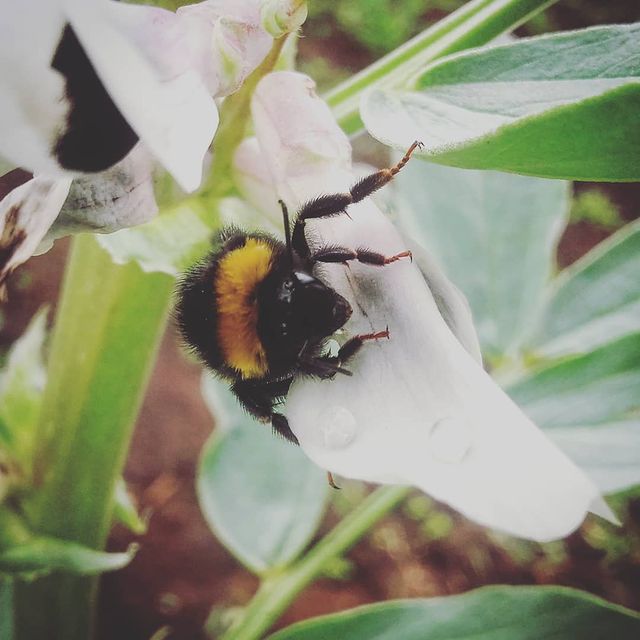Consequences of the high abundance of Bombus terrestris on the pollination of Vicia faba
DOI:
https://doi.org/10.26786/1920-7603(2021)630Abstract
One of the main visitors to Fabia bean crops (Vicia faba) in South America is the invasive bumblebee species Bombus terrestris. This is particularly true in Chile, where B. terrestris was first introduced in 1997 and is now common over much of the country. In this study, we evaluated the activity of the principal pollinators of V. faba over two cropping seasons by assessing their visitation rates while distinguishing between legitimate visits, likely to lead to pollination, and nectar robbery. We then determined the net contribution of insect visitation on pod and seed set. We recorded seven species of floral visitors. Most visits (legitimate visits and robbery) were from the honeybee (Apis mellifera), with B. terrestris being the next most common visitor. In the case of B. terrestris, 87.19% of visits were nectar robbery. On average, the same flower perforation was visited 23 times by B. terrestris during the flower's lifespan. In general, the frequency of legitimate visits varied with pollinator identity and year. For B. terrestris, each flower received an average of 0.95 legitimate visits during its entire lifespan. The time spent by B. terrestris visiting flowers for both nectar robbery or pollen collection decreased after the first day of flowering suggesting resource depletion. The number of pods, total seed number, and seed weight were lower where self rather than open pollination. This suggests that open pollination increased reproductive success. We conclude that B. terrestris was likely to contribute relatively little to pollination while at the same time depleting floral resources throughout the flowers’ lifespan.

Downloads
Additional Files
Published
How to Cite
Issue
Section
License
Copyright (c) 2021 Cecilia Smith, Adriana Rendón, Rodrigo Barahona, Wladimir Moya

This work is licensed under a Creative Commons Attribution 4.0 International License.
JPE is an open access journal which means that all content is freely available without charge to the user or his/her institution.
Authors who publish with this journal agree to the following terms:
1) Authors retain copyright and grant the journal right of first publication with the work simultaneously licensed under a Creative Commons Attribution License that allows others to share the work with an acknowledgement of the work's authorship and initial publication in this journal.
2) Authors are able to enter into separate, additional contractual arrangements for the non-exclusive distribution of the journal's published version of the work (e.g., post it to an institutional repository or publish it in a book), with an acknowledgement of its initial publication in this journal.
3) Authors are permitted and encouraged to post their work online (e.g., in institutional repositories or on their website) prior to and during the submission process, as it can lead to productive exchanges, as well as earlier and greater citation of published work (See The Effect of Open Access).
To assure a broader targeted audience, content will be included into databases (such as EBSCO) and directories (such as DOAJ).











